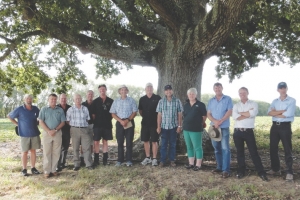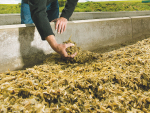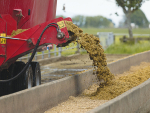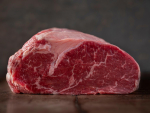WE MAY have thought we had maize week control nailed with pre-emergence sprays such as Atrazine, but nature, in her inimitable way, has seen some weeds develop resistance and render it useless in some paddocks.
There are other pre-emergence chemicals still doing a job on such sites, but who knows when they too will become redundant?
A recent field session at the Maize Research Station run by FAR at Tamahere, Hamilton, saw chemical companies, contractors and farmers gather to hear AgResearch’s Trevor James talk about what might come next.
With some pre-emergence sprays not only becoming less effective, but being banned elsewhere, James and his team are investigating how effective existing and newly developed but not yet commercialised post-emergence sprays are.
Of thirteen treatment plots, twelve have had just one application of various post-emergence sprays with no pre-emergence product used. The treatments include sprays known to be effective on broadleaf weeds and others which work mostly on grasses. To get the most out of each product BASF’s additive Cadet (topramezone) was added as it is supposed to increase knockdown and spectrum of weeds affected.
While results are still to be written up, it is clear some sprays are more effective than others. Untreated plots demonstrate the local seedbank, with lush fathen nearly a metre tall towering between the maize.
The maize itself in all plots is fairly uniform, despite it being known some of the sprays can affect early maize growth. To minimise this 110° spray nozzles at 75mm spacing were used to give wide but low coverage.
James says timing of spraying is the most important factor, particularly with post-emergence sprays. For pre-emergence spray within seven days of cultivation; with post-emergence, get in early when weeds are no more than an inch high: it’s far more effective than trying to knockdown big weeds later.
The trial results should demonstrate which post-emergent sprays work best, then calculations on cost-effectiveness need to be done to enable pricing of supplementary feed from maize grain and silage.
James says while pre-emergence sprays are still permitted, they’re the most cost-effective weed control, if necessary topped up with a post-emergent spray.
However, he stresses that if markets get particular over spray use New Zealand growers needed to be ready to change their methods.











